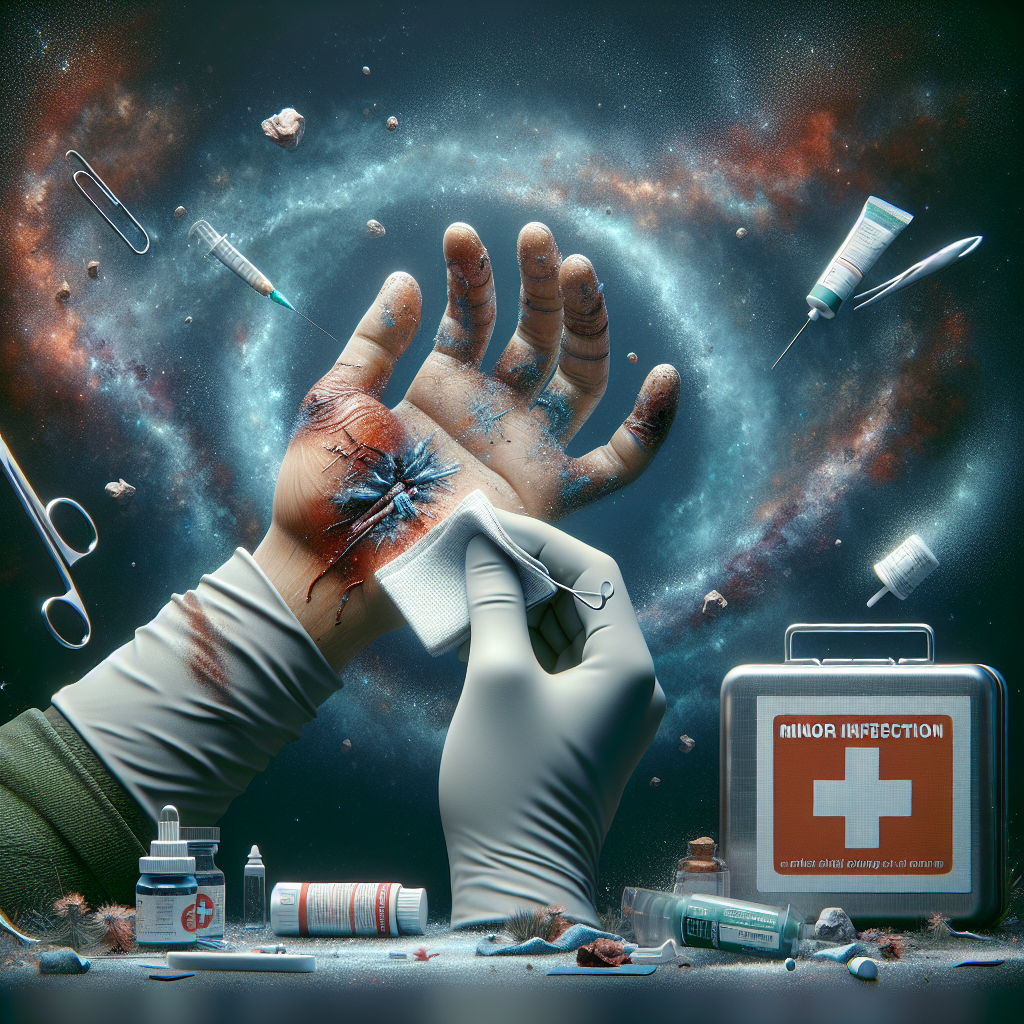Introduction
Cuts are a part of life, whether from cooking mishaps, gardening accidents, or playful roughhousing. But what happens when a simple cut starts feeling infected? As the saying goes, “An ounce of prevention is worth a pound of cure.” This article will guide you through recognizing infection symptoms, treating an infected cut, and understanding when to seek professional medical care.
- Recognizing Symptoms of an Infected Cut
- Treating an Infected Cut at Home
- When to Seek Medical Attention
- Preventing Cut Infections
- Key Takeaways
- FAQ
- Conclusion
Recognizing Symptoms of an Infected Cut
Imagine your skin as a sturdy fortress. When it’s breached, bacteria can infiltrate and cause an infection. Understanding the signs can be the difference between a minor inconvenience and a serious health issue.
Common Symptoms
- Redness spreading around the wound
- Swelling and warmth in the affected area
- Pain that increases rather than decreases over time
- Pus or discharge from the cut
- Fever or chills, indicating a systemic infection
If you notice these symptoms, it’s essential to act promptly. Time is of the essence when dealing with possible infections.
Treating an Infected Cut at Home
Before rushing to the doctor, there are several steps you can take at home to manage a cut that’s starting to show signs of infection. Think of it as fortifying the walls against invaders.
Clean the Wound Thoroughly
First and foremost, clean the area with mild soap and water. Avoid using harsh chemicals like hydrogen peroxide, which can damage tissue and delay healing. For more on why hydrogen peroxide might not be the best choice, check out this insightful read.
Apply an Antibiotic Ointment
Using an over-the-counter antibiotic ointment helps keep bacteria at bay. Apply a thin layer after cleaning the wound.
Keep It Covered
Covering the cut with a sterile bandage can prevent further contamination. Remember to change the bandage daily or whenever it gets wet or dirty.
Monitor for Improvement
Keep an eye on the cut for any signs of worsening infection. If symptoms persist or escalate, it might be time to seek professional help.
When to Seek Medical Attention
Not every infected cut requires a trip to the doctor, but knowing when to go can prevent complications. It’s like knowing when to call in reinforcements during a siege.
Persistent or Worsening Symptoms
If redness, swelling, and pain continue to increase despite home treatment, it’s time to consult a healthcare professional.
Systemic Symptoms
Fever, chills, and fatigue are red flags indicating the infection may have spread beyond the local area. Immediate medical attention is crucial in such cases.
Special Considerations
Individuals with weakened immune systems, diabetes, or other chronic conditions should seek medical advice sooner rather than later. Their bodies may struggle more with fighting infections.
For those in need of urgent care services, facilities like Willowbrook Urgent Care are equipped to handle such situations efficiently.
Preventing Cut Infections
Prevention is always better than cure. Here are some tips to keep your cuts clean and infection-free:
- Wash your hands before and after touching a wound.
- Keep cuts clean and covered until they heal.
- Avoid picking at scabs; let them fall off naturally.
- Stay up-to-date on tetanus vaccinations.
- Consult resources like CDC Infection Control Guidelines for more information.
Key Takeaways
- Recognize early symptoms of infection: redness, swelling, pain, pus, fever.
- Treat minor infections at home by cleaning, applying antibiotic ointment, and covering the wound.
- Seek medical attention if symptoms persist or worsen.
- Practice good hygiene to prevent infections.
FAQ
Can I use hydrogen peroxide to clean my cut?
No, hydrogen peroxide can damage tissue and delay healing. Instead, opt for mild soap and water.
What if I develop a fever from a cut infection?
If you develop a fever, it indicates that the infection may have spread. Seek medical attention immediately.
How often should I change the bandage on an infected cut?
Change the bandage daily or whenever it becomes wet or dirty to prevent further contamination.
Conclusion
Infections can turn a minor cut into a major problem if not addressed promptly. By recognizing the symptoms early and taking appropriate action, you can heal swiftly and avoid complications. Remember, maintaining good hygiene and seeking timely medical care are your best defenses.
For comprehensive urgent care services, visit our dedicated page on Urgent Care Services. Stay informed and stay safe!




